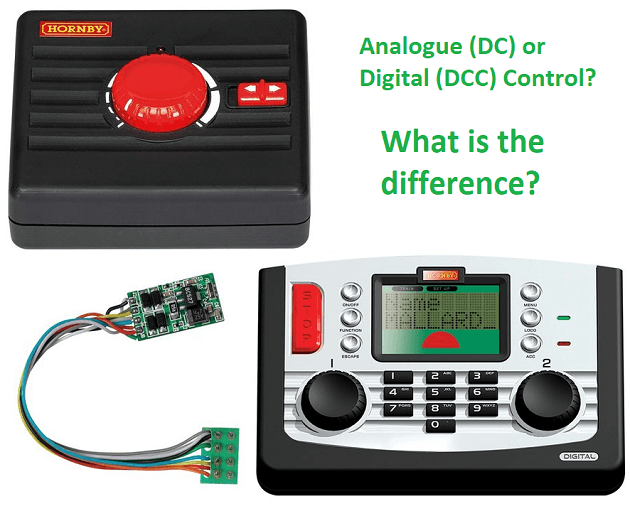
There are now two ways of controlling your model railway layout, traditional analogue DC control and modern digital DCC control, but what is the difference?
What is DC Control?
The traditional method of controll is DC, meaning direct current, is a method of control provided by modifying the flow of electricity from one rail to another along the track of your model railway. DC control is commonly referred to as analogue control.
You control the speed of locomotives on your model railway by varing the current of the electricity supplied to the track, which provides more or less power to the motor in the locomotive. To change the direction the locomotive moves you switch the direction that the current flows through the track. This is done using an analogue control unit. This unit will have a dial to control the current, and a switch to control direction.
If you have more than one locomotive on the same section of track they cannot be independently controlled with DC. If you build you layout with separate loops, sidings, and fiddle yards, the sections can be controlled separately by buying additional control units or a multi-channel control unit. We stock a number of multi-channel control units from Gaugemaster. Each separate control unit, or channel from a multi-channel unit, needs to be wired up to each section of your layout. It is possible to move a locomotive into a siding, then move a different locomotive out of another siding, using a single control unit as when you switch the points it creates a break in the circuit to that section of track.
Typically a train set will be supplied with a DC control unit and power supply, such as the Hornby Analogue Train & Accessory Controller. When you are getting started with railway modelling and are only runnig a single loop with a small siding, analogue control is much easier and simpler.
What is DCC Control?
Digital Command Control (DCC) is becoming the most popular way to control model railway layouts.
Where DC works by varying the flow of current through the track, DCC uses a consistent current. DCC control units work by sending signals through the power supply that is interpreted by decoders in your locomotives and accessories. This allows you to control several locomotives independently, from the same control unit, even if they are on the same section of track. There are also a wide range of powered accessories available for digital raliway layouts, controlled with the same system. The Hornby Elite DCC Control Centre can control up to 255 locomotives and another 255 accessories.
While some locomotives come equipped with a digital decoder, most are analogue but have been designed so that a decoder can be fitted. These are referred to as 'DCC Ready'. Make sure to check this when purchasing a locomotive for your digital layout. Digital locomotives can also have digitally-controlled sound effects.
It is even possible to control a DCC layout through apps for your computer or phone, such as Hornby eLink and Railmaster.

